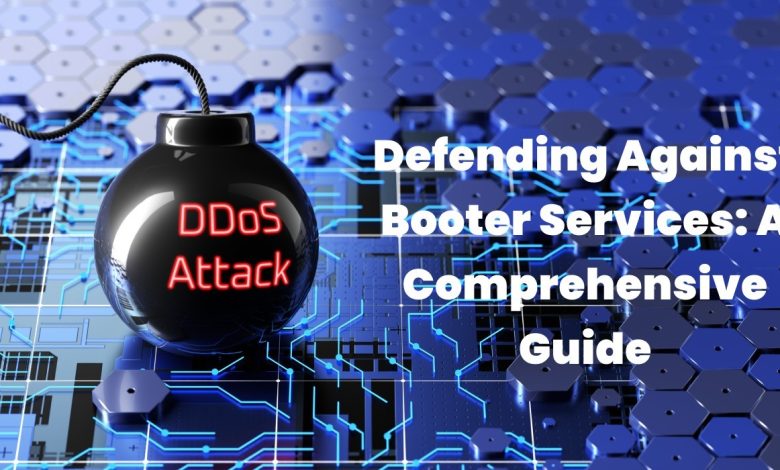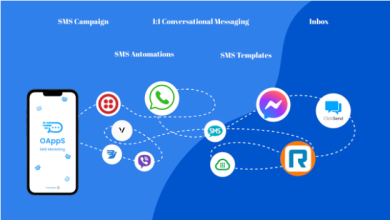Booters vs. DDoS Attacks: Understanding the Connection and Risks

In the ever-evolving landscape of cybersecurity, understanding the various tools and tactics used by cybercriminals is crucial for defending against digital threats. Two terms that frequently arise in discussions about cyberattacks are “booters” and “DDoS attacks.” While often mentioned together, these terms represent distinct concepts that are closely related. This article will delve into the connection between booter and DDoS attacks, explore the risks associated with them, and provide insights into how businesses and individuals can protect themselves.
Defining Booters and Their Function
Booters, also known as stressers, are tools used to initiate Denial of Service (DoS) or Distributed Denial of Service (DDoS) attacks. Originally designed for legitimate purposes, such as testing the robustness of network infrastructure under high traffic conditions, booters have been repurposed for malicious use. They work by overwhelming a target system with excessive traffic, thereby rendering it unable to process legitimate requests and causing service disruption.
Booters typically offer a user-friendly interface where individuals can specify the target’s IP address and the desired intensity of the attack. This ease of use has made booters popular among cybercriminals who use them to execute attacks without needing extensive technical knowledge. The ability to rent or purchase booters from underground forums has further contributed to their widespread misuse.
Understanding Distributed Denial of Service (DDoS) Attacks
A DDoS attack is a type of cyberattack where multiple systems, often part of a botnet, flood a target with a high volume of traffic. Unlike a simple Denial of Service (DoS) attack, which originates from a single source, a DDoS attack involves a distributed network of compromised devices working together to overwhelm the target. The goal is to exhaust the target’s resources—such as bandwidth, memory, or processing power—resulting in the disruption or complete shutdown of the targeted service.
DDoS attacks can vary in complexity and scale. They can involve simple traffic floods or more sophisticated techniques, such as application-layer attacks that exploit specific vulnerabilities in the target’s software. The distributed nature of DDoS attacks makes them particularly challenging to defend against, as they involve high volumes of traffic from numerous sources.
The Connection Between Booters and DDoS Attacks
Booters and DDoS attacks are intrinsically linked, as booters are commonly used to execute DDoS attacks. Essentially, a booter is a tool designed to facilitate the launch of a DDoS attack. By leveraging a network of compromised devices, booters can generate the massive volume of traffic needed to carry out a successful DDoS attack.
The connection between booters and DDoS attacks highlights the dual nature of these tools. While booters were originally intended for legitimate stress testing, their misuse has turned them into powerful instruments for carrying out DDoS attacks. This relationship underscores the importance of understanding how these tools work and their potential implications for network security.
Risks Associated with Booters and DDoS Attacks
The risks associated with booters and DDoS attacks are substantial and multifaceted. For businesses, the immediate impact includes service disruption, downtime, and financial losses. When a target’s website or network becomes unresponsive, customers are unable to access services, leading to revenue loss and operational setbacks. Additionally, prolonged attacks can strain IT resources and increase costs related to mitigation and recovery.
Beyond the immediate financial impact, DDoS attacks can cause reputational damage. Customers and clients expect reliable and consistent service, and frequent outages can erode trust and damage a company’s reputation. This can have long-term effects on customer loyalty and brand perception, making recovery from an attack even more challenging.
The Evolution of Booters and Their Impact on Cybersecurity
The evolution of booter from legitimate network testing tools to malicious instruments has had a significant impact on cybersecurity. As booters have become more accessible and affordable, their misuse has proliferated, leading to an increase in DDoS attacks. This evolution has challenged traditional cybersecurity measures and prompted the development of more advanced defense strategies.
The growing sophistication of booters and DDoS attacks has necessitated the adoption of comprehensive security solutions. Organizations must stay ahead of evolving threats by investing in advanced traffic monitoring, intrusion detection systems, and DDoS mitigation services. The dynamic nature of these threats highlights the need for continuous vigilance and adaptation in cybersecurity practices.
Strategies for Defending Against Booters and DDoS Attacks
Defending against booters and DDoS attacks requires a multi-layered approach that combines proactive measures with reactive strategies. One effective method is to deploy traffic analysis tools that can detect unusual patterns and spikes in traffic. These tools can provide early warnings of potential attacks and help IT teams respond swiftly.
Implementing robust network security measures, such as firewalls, intrusion prevention systems (IPS), and load balancers, can also help mitigate the impact of DDoS attacks. Additionally, engaging with specialized DDoS protection services can provide an extra layer of defense by redirecting malicious traffic and ensuring that legitimate traffic remains unaffected.
The Role of Cybersecurity Awareness and Training
Cybersecurity awareness and training play a crucial role in preventing and mitigating the effects of booters and DDoS attacks. Educating employees about the risks associated with these threats and promoting best practices for cybersecurity can significantly reduce the likelihood of successful attacks.
Training programs should cover topics such as recognizing phishing attempts, securing network devices, and responding to suspicious activities. By fostering a culture of security awareness, organizations can enhance their overall resilience to cyber threats and better protect their assets and data.
The Future of Booters and DDoS Attacks
As technology continues to advance, the tools and tactics used in cyberattacks will also evolve. The future of booters and DDoS attacks is likely to see increased sophistication, with attackers developing more advanced methods to evade detection and enhance their effectiveness. Emerging technologies, such as artificial intelligence and machine learning, may be leveraged by attackers to automate and scale their attacks.
To counter these evolving threats, cybersecurity strategies must also advance. Investing in innovative security solutions, staying informed about emerging threats, and collaborating with industry experts will be crucial for maintaining effective defenses against booters and DDoS attacks.
Conclusion
Booters and DDoS attacks represent significant threats in the realm of cybersecurity, with the potential to cause substantial disruption and damage. Understanding the connection between these tools and the risks they pose is essential for developing effective defense strategies.
By implementing proactive measures, investing in advanced security solutions, and fostering cybersecurity awareness, businesses and individuals can better protect themselves against the evolving landscape of digital threats. As cybercriminals continue to refine their tactics, staying vigilant and adaptable will be key to navigating the challenges of digital security and safeguarding against the impacts of booters and DDoS attacks.









